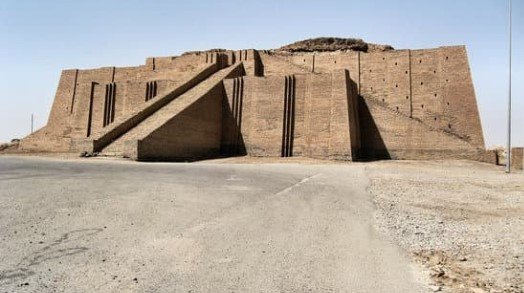Timeline of Ancient Mesopotamia
by World History Edu · April 7, 2025
Ancient Mesopotamia is often called the “Cradle of Civilization.” It was home to some of the world’s earliest cities, governments, writing systems, and empires. Located between the Tigris and Euphrates rivers in what is now modern-day Iraq, Mesopotamia gave rise to powerful cultures like the Sumerians, Akkadians, Babylonians, and Assyrians.
This timeline covers the key periods and events in Mesopotamian history to help you understand how it all came together—and why it matters today.

A glimpse into the world’s first cities—where writing, law, and culture began.
c. 10,000 BCE – First Agricultural Settlements
Long before cities rose, people began settling near the Tigris and Euphrates rivers. These early settlers farmed, domesticated animals, and built small villages. The region’s fertile soil allowed agriculture to thrive, giving people the chance to settle rather than live as nomads.
This early farming set the stage for the complex societies that would follow.
c. 4500–3100 BCE – The Ubaid and Uruk Periods
The Ubaid period saw the rise of the first temples, irrigation systems, and organized communities. Then came the Uruk Period, named after the city of Uruk, one of the earliest true cities in the world. Uruk had walls, markets, large temples (ziggurats), and a population in the tens of thousands.
During this time, the world’s first writing system, known as cuneiform, was developed by the Sumerians. They used wedge-shaped marks on clay tablets to keep records and tell stories.
c. 3100–2334 BCE – The Early Dynastic Period
The Early Dynastic Period saw the rise of powerful city-states like Ur, Lagash, , and Uruk. Each city had its own king and patron god or goddess. These cities often went to war with one another to control farmland, trade routes, and water.
Religion played a central role. Each city built large temples called ziggurats and had a powerful priestly class that influenced politics and daily life.
Many myths and epics were created during this time, including parts of the Epic of Gilgamesh, one of the oldest known works of literature.
c. 2334–2154 BCE – The Akkadian Empire
The world’s first known empire was founded by Sargon of Akkad, who conquered many Sumerian city-states and united them under one rule. This marked the beginning of the Akkadian Empire, named after the city of Akkad.
Sargon established a professional army and a centralized government. His empire stretched across much of Mesopotamia and beyond.
The Akkadian Empire also helped spread the Akkadian language, which would later replace Sumerian in everyday speech, though Sumerian remained in religious and scholarly use.
The empire eventually collapsed due to internal struggles and invasions by mountain tribes known as the Gutians.
c. 2154–2112 BCE – Gutian Rule and Chaos
After the fall of Akkad, Mesopotamia entered a period of instability. The Gutians ruled parts of the region, but they were not well-organized and struggled to maintain control.
This was a time of economic decline and reduced literacy, but soon a new power would rise in southern Mesopotamia.
c. 2112–2004 BCE – The Neo-Sumerian Empire (Ur III)
A king named Ur-Nammu from the city of Ur established a new dynasty and began a cultural and political revival. This period is sometimes called the Neo-Sumerian Empire or the Third Dynasty of Ur.
Ur-Nammu created one of the world’s earliest known law codes, even before Hammurabi. The economy, religion, and administrative systems were restructured. Massive building projects resumed, especially temples and ziggurats.
This era marked a return to Sumerian traditions and glory, but it didn’t last long.
c. 2000–1595 BCE – The Old Babylonian Period
After the fall of Ur, various groups, including the Amorites, began settling in Mesopotamia. One Amorite leader named Hammurabi rose to power and made the city of Babylon the center of a new empire.
Hammurabi is most famous for his Code of Hammurabi, a detailed set of laws carved into a large stone pillar. These laws covered everything from business contracts to punishments for crimes, and the principle of “an eye for an eye” comes from this code.
Under Hammurabi, Babylon became a major center of culture, education, and law. After his death, the empire weakened and eventually fell to the Hittites, who sacked Babylon around 1595 BCE.
c. 1595–1155 BCE – The Kassite Period
After the Hittites left, the Kassites, a group from the Zagros Mountains, took control of Babylon. They ruled for about 400 years, one of the longest peaceful reigns in Mesopotamian history.

From Sumer to Babylon, the ziggurats mark the rise of kings and gods.
The Kassites adopted many Babylonian traditions and kept the region stable. They built temples, maintained law codes, and even honored Hammurabi’s legacy.
Though not as flashy as earlier empires, the Kassite period helped preserve and pass on Mesopotamian culture.
c. 900–612 BCE – The Neo-Assyrian Empire
To the north, the city of Assur gave rise to a new power—the Assyrians. By 900 BCE, they were building a mighty military state. Using iron weapons and cavalry, they built one of the largest empires the world had seen up to that time.
The Assyrians became known for their fierce armies, detailed battle records, and incredible palaces. Cities like Nineveh and Nimrud became cultural centers, filled with libraries, art, and sculpture.
King Ashurbanipal created a huge library in Nineveh, containing thousands of clay tablets that modern historians have used to learn about Mesopotamian life.
But Assyria’s harsh rule led to rebellions, and in 612 BCE, a coalition of Babylonians and Medes destroyed Nineveh, bringing the empire to an end.
c. 626–539 BCE – The Neo-Babylonian Empire
The Chaldeans, a group living in southern Babylonia, took over and established the Neo-Babylonian Empire. Their most famous king was Nebuchadnezzar II, who expanded the empire and built up Babylon into one of the most impressive cities of the ancient world.
This period is known for:
-
The Hanging Gardens of Babylon (one of the Seven Wonders of the Ancient World, though its existence is debated)
-
The rebuilding of the Tower of Babel
-
The Babylonian Captivity of the Jewish people
Babylon became a symbol of power, learning, and culture.
539 BCE – Persian Conquest and the End of Mesopotamian Independence
In 539 BCE, Cyrus the Great, king of the Persian Empire, conquered Babylon. Though Persian rulers allowed some local customs to continue, Mesopotamia was no longer independent.
This marked the end of ancient Mesopotamian civilization as a dominant power, though its influence lived on through the Persians, Greeks, Romans, and even into modern times.
Why Is Ancient Mesopotamia Important Today?
Mesopotamia gave the world many firsts:
-
The first writing system (cuneiform)
-
The first laws (Hammurabi’s Code)
-
The first cities and governments
-
Early mathematics, astronomy, and literature
It laid the foundation for many aspects of modern life. Without Mesopotamia, history as we know it would look very different.
Fun Fact
The word “Mesopotamia” comes from Greek and means “land between rivers”—a perfect name for a civilization built between the Tigris and Euphrates.

A tribute to Mesopotamia’s early wisdom and innovation.
Frequently Asked Questions (FAQ)
1. What is Mesopotamia and where was it located?
Mesopotamia means “land between rivers” in Greek. It was located between the Tigris and Euphrates Rivers, in the area of present-day Iraq, as well as parts of Syria, Kuwait, and Turkey.
2. Why is Mesopotamia called the “Cradle of Civilization”?
Mesopotamia is called the Cradle of Civilization because it was where many important developments first occurred, including the first cities, writing system, law codes, and organized governments.
3. Who were the Sumerians?
The Sumerians were one of the earliest people to build cities in Mesopotamia. They developed the first known writing system, called cuneiform, and lived in city-states like Ur, Uruk, and Lagash around 3100 BCE.
4. What is cuneiform?
Cuneiform is the first known system of writing. It was invented by the Sumerians and involved pressing wedge-shaped symbols into clay tablets. It was used to record trade, laws, stories, and government records.
5. Who was Hammurabi and why is he important?
Hammurabi was a king of Babylon around 1792 BCE. He is best known for creating the Code of Hammurabi, one of the first written sets of laws. It helped establish the idea that laws should be written down and apply to everyone.
6. What were ziggurats?
Ziggurats were massive, pyramid-like temples built in Mesopotamian cities. They were made of mud-brick and served as religious centers dedicated to the city’s patron god or goddess.
7. Who were the Assyrians?
The Assyrians were a powerful people from northern Mesopotamia who built a large empire from around 900 to 612 BCE. They were known for their strong military, impressive palaces, and libraries, especially the Library of Ashurbanipal in Nineveh.
8. What was the Neo-Babylonian Empire?
The Neo-Babylonian Empire was the last major Mesopotamian empire, ruled by the Chaldeans. Under Nebuchadnezzar II, Babylon became a grand city. This period is known for the supposed Hanging Gardens of Babylon and the Babylonian Captivity of the Jewish people.
9. What led to the fall of Mesopotamian civilizations?
Mesopotamian civilizations fell due to invasions, internal conflicts, and the rise of new powers like the Persian Empire, which conquered Babylon in 539 BCE. Over time, Mesopotamia lost its independence and became part of larger empires.
10. How did Mesopotamia influence modern society?
Mesopotamia influenced the modern world in many ways:
-
The idea of laws and justice
-
The use of written records
-
Early advances in mathematics and astronomy
-
Development of irrigation and farming techniques
-
The structure of government and cities
Their innovations helped shape later civilizations and are still studied today.



























